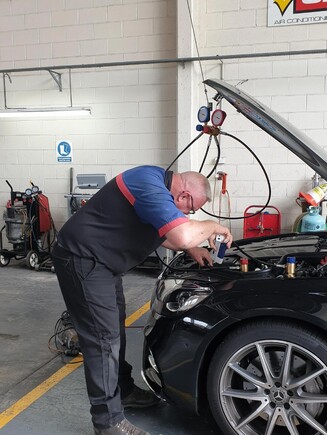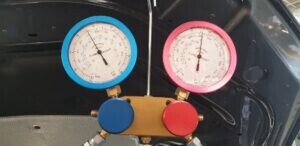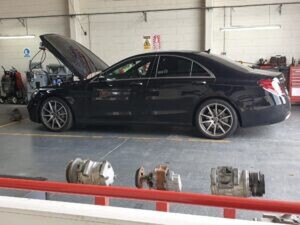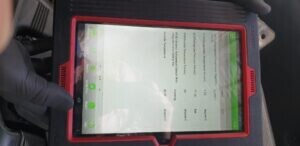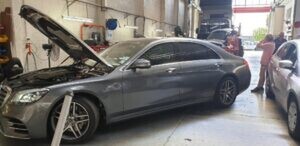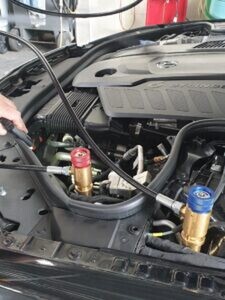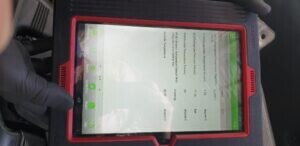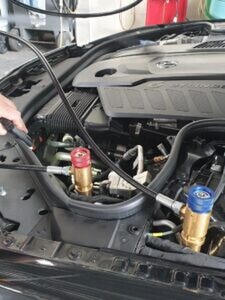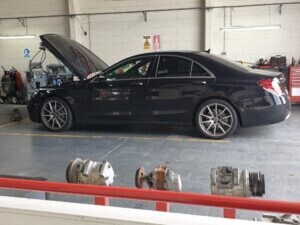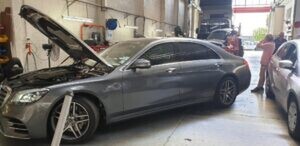News Flash R744 / C02 capability is now available at CoolCar Hamilton
Mercedes has elected to use C02 as a refrigerant due to its relatively low-GWP (global warming potential). Compared with some other refrigerants, CO2 has a GWP of 1 (being the baseline for CO2 equivalent measurement). The typical refrigerant R134a, used for 25 years in cars, has a GWP of 1400. International accords are driving the change to low GWP refrigerants in all applications; cars, domestic and commercial air-conditioning, and refrigeration. The air-conditioning system in the two S-Class Mercedes pictured (believe it or not there are two cars at our workshop with this rare refrigerant, requiring work) contains 410g R744. If an equivalent amount of R134a had been used instead, the release of that refrigerant to the atmosphere, should it be let out or leaked out, would have amounted to the release of 630kg of sequestered CO2 to the atmosphere.
With the advent of parallel imported cars such as the high-end Mercedes S-Class, systems with this refrigerant are circulating in New Zealand. As this refrigerant is not used in Mercedes sold directly to the NZ market, Mercedes does not have the equipment for these cars at the dealership, as CO2 is not supported. So, the decision was made to set up CoolCar Hamilton with the necessary equipment.
People purchasing these cars (and the people selling them) are typically unaware of the special nature of the air-conditioning systems and buy themselves some trouble.
In the case of these two vehicles, both have low refrigerant needing the fault found and repaired. The first (grey) car has come all the way from Christchurch as the seller and buyer despaired at finding someone to fix the car. The local dealership could advise that the system had no gas, but could take it no further. Leak checking using specialised air-conditioning forming gas and the Loktrace leak detector showed that the system had two leaks. One at the alloy block pictured between the two service ports (where our equipment is shown connecting to the system) and at a weld in the alloy pipe below the low side service port (under the blue coupler).
The second car was half charged with refrigerant, the rest had leaked out from the compressor shaft seal before the computer disabled the AC due to low gas.
Repairs required are a new pipe in the first instance and a new compressor in the second instance with all new unique sealing washers (including inside the alloy block leaking in the first car) before re-gassing.
Once re-charged, the performance of the system can be monitored using a diagnostic scan tool talking to the engine management computer.
There is no information available to the after-market about these systems and the repairs have been performed using refrigeration first principles. Despite its unique nature, CO2 operates similarly to in-use refrigerants. It is a multi-refrigerant market these days in all sectors of refrigeration. In automotive air-conditioning we are still seeing 20-30-year-old cars with ozone-depleting R12 (Freon), most of the vehicle fleet with R134a, and in the case of these two unique cars, R744.
